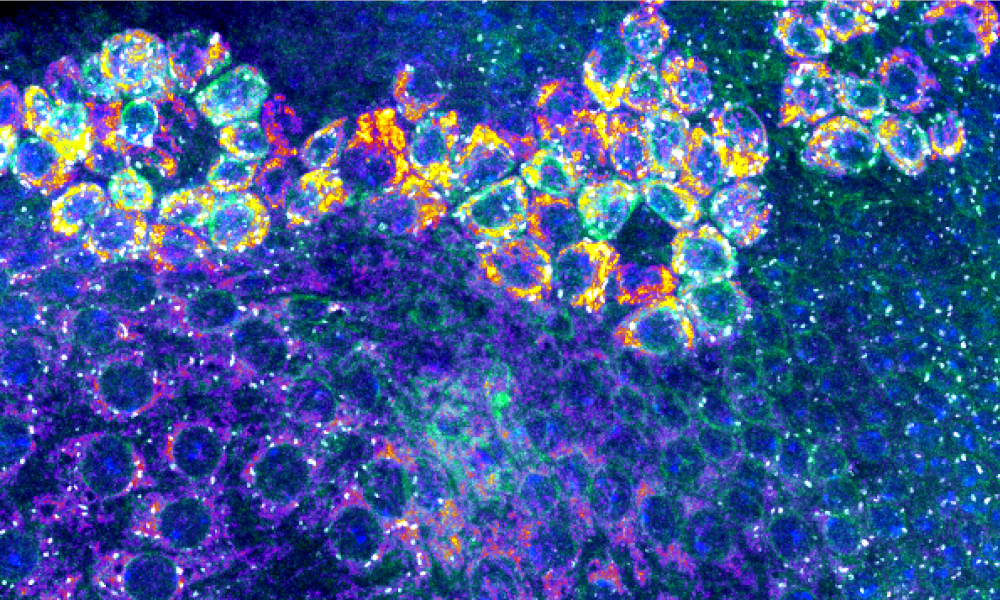
Read the latest Issue

Fruit flies are much-used model organisms in the life sciences. Not only are these small animals useful to study different biological processes, they are also extremely photogenic when seen through a microscope.
The image shown here, taken by Daniel Rios-Barrera from the Leptin Group shows the cells of the early wing tissue, called primordium, of the fly during larval development. While fly larvae have no wings yet, they have two primordial structures. These are buried in the flies’ backs and will develop into wings during metamorphosis. During fruit fly larval development the primordium receives patterning signals. These signals are used by scientists to study cell communication, proliferation and similar processes.
In this image, a protein found in the endoplasmic reticulum appears in pink; a protein of the endoplasmic reticulum exit sites in white; cell nuclei are shown in blue. Yellow/cyan areas indicate areas at which the endoplasmic reticulum protein is found at higher concentration.
Credit: Daniel Rios-Barrera/EMBL
Looking for past print editions of EMBLetc.? Browse our archive, going back 20 years.
EMBLetc. archive